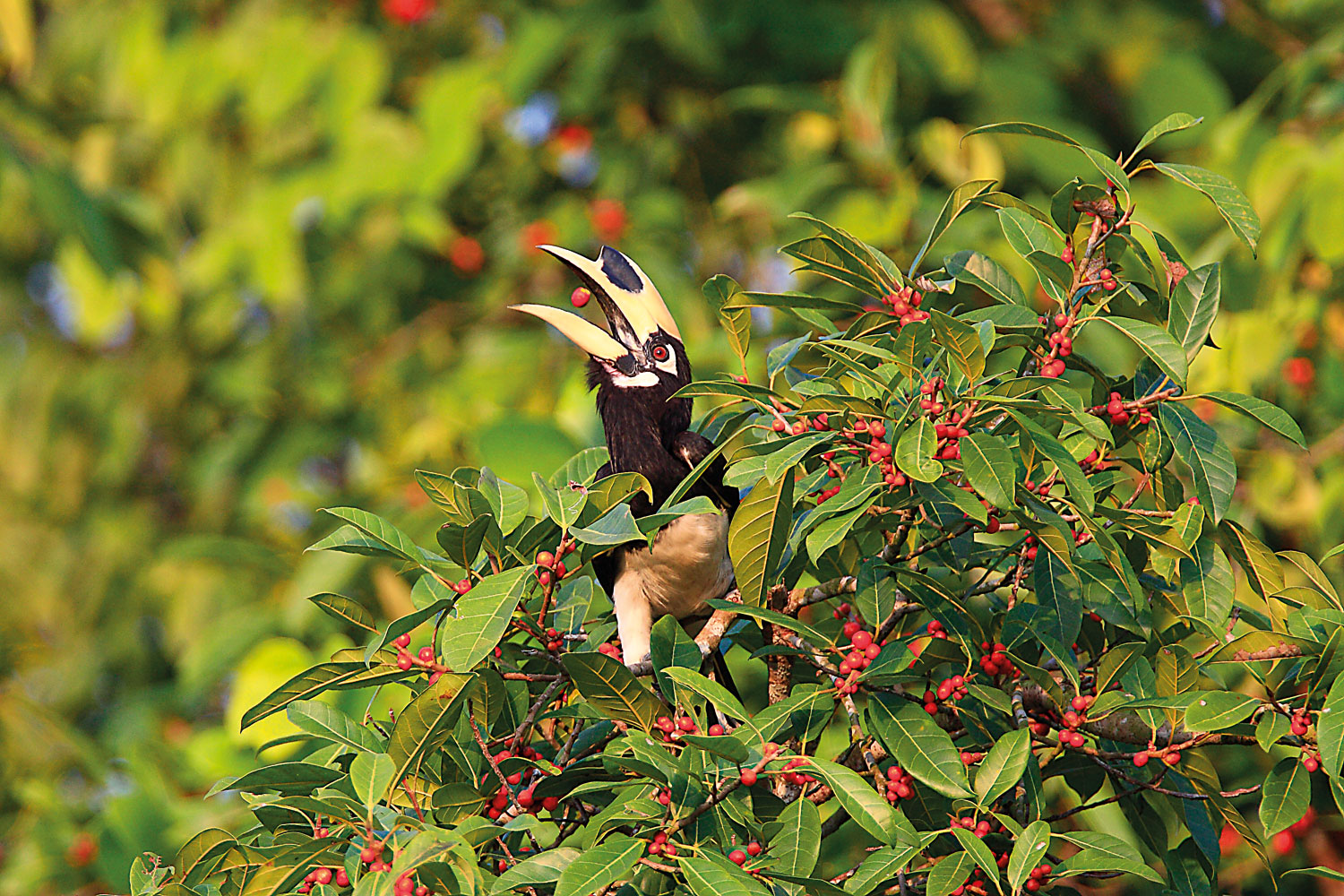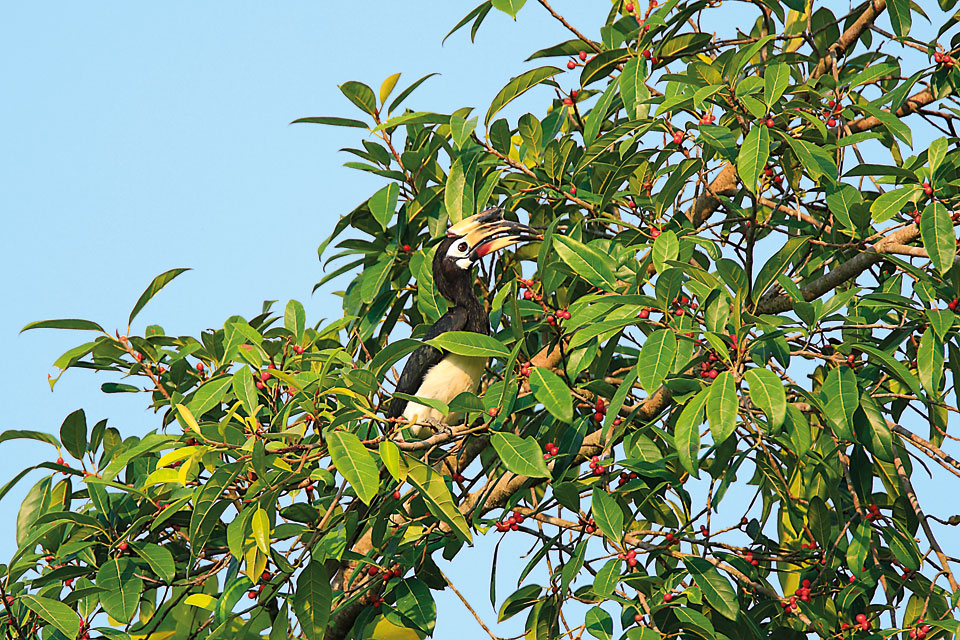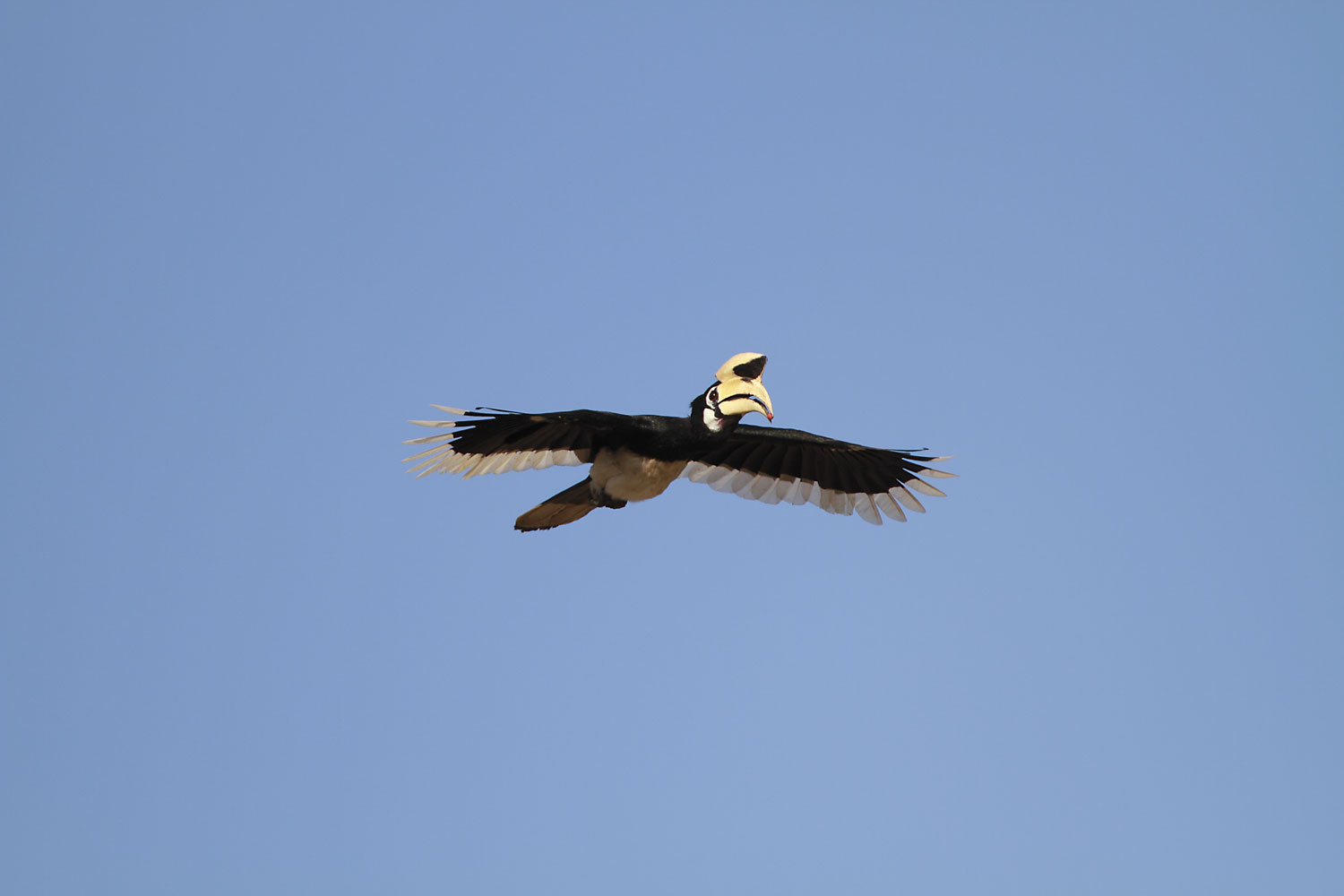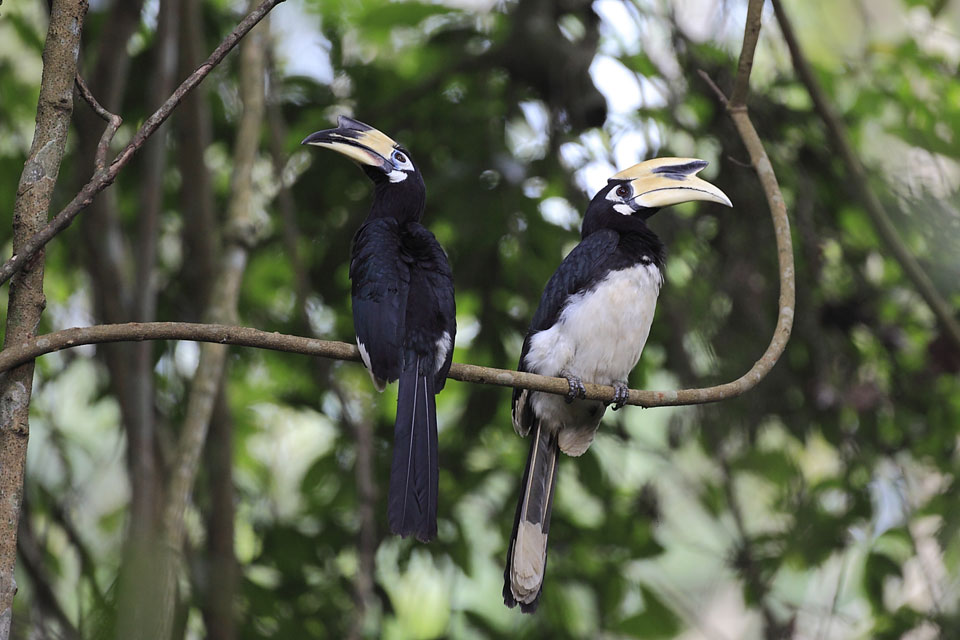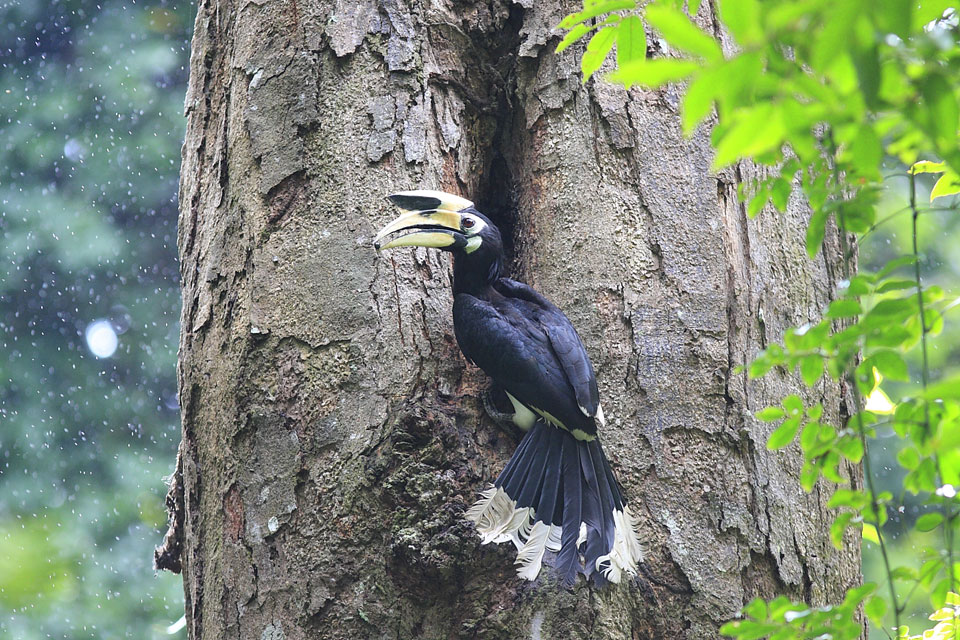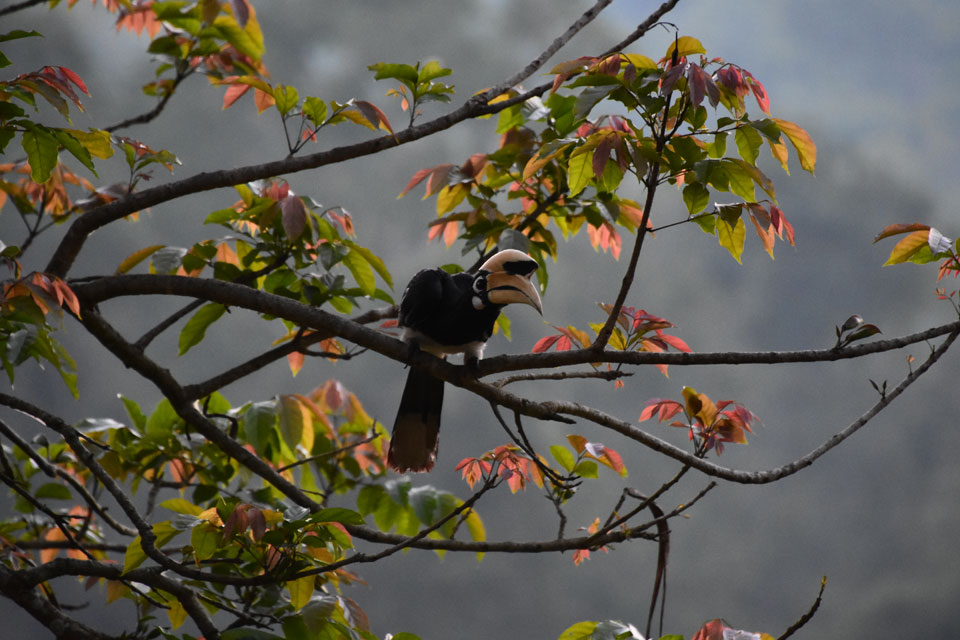Apart from maybe the Indian Grey Hornbill, this is the only Asian hornbill that does not depend on primary forest for habitat, not even for breeding.
It does occur in closed deciduous or evergreen forest, but it prefers forest edges, open woodlands and even coastal and riverine scrub and cultivation. Occurs in the coastal lowlands and extends inland up to 700 m elevation.
In South-east Asia it can be seen at close range, coming to feeding tables in beach resorts and villages near forested areas where it will feed on papaya, rambutan, mango, banana and other readily available fruits. If feeds mainly on fruits; in Thailand 49 different fruit varieties have been identified with more non-fig (47%) than fig species (33%).
Wild fruit of preference other than figs includes Polyalthia (Annonaceae), Horsfieldia (Myristicaceae), Strombosia (Oleaceae) and Dysoxylum (Meliaceae). It will also take animal food and a large variety of prey has been identified (56 species) including various insects, centipedes, millipedes, scorpions, spiders, snails, earthworms, lizards, small birds and eggs, and rats; occasionally it even takes snails, crabs and fish from the water’s edge.
It feeds mainly in the canopies of trees but will also drop to the ground to pick up fallen fruits or prey; it uses its large bill with finesse to grab, tear and swallow small food objects. Moves in pairs of family groups and is largely sedentary and territorial.
Outside the breeding season, flocks of up to 170 birds have been recorded. In Khao Yai NP, they move around to favorable feeding habitats and fruiting trees. In non-breeding season they many be seen dust-bathing to repel ectoparasites.
